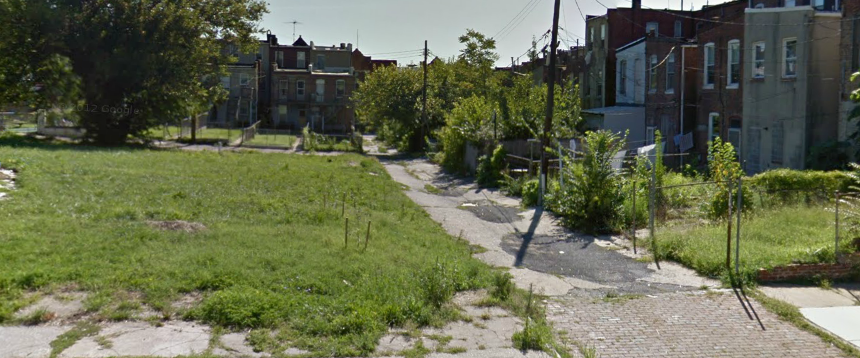Roadmap for a Successful Urban Farm: Cultivate Community Acceptance
What do you see here? A vacant lot? Neighborhood blight? Unfulfilled ambitions? Or do you see untapped potential, a plot rich in opportunity? Perhaps a glint of promise for a community camouflaged by trash and overgrown weeds?
If your vision involved growing food as a productive way to use these vacant plots of city land, you are not alone. Forms of urban agriculture, such as urban farming and community gardens, are springing up all across the country as the positive impact they can have on communities is being recognized.
While both farms and gardens utilize unused city space to produce food, urban farms emphasize the commercial aspect of the initiative. Unlike urban gardens, where food is consumed directly by the gardener(s), food from an urban farm is grown for sale and distributed to a broader population. As a result, urban farms offer some unique benefits such as making fresh food available to local consumers, creating potential employment opportunities, and generating income.
So, you might think: “Here’s this lonely plot of land in the middle of a food desert in the city where we could grow and sell fresh produce. The residents are going to love it!” Except, of course, the neighborhood residents might not share your enthusiasm.
Despite the best-laid plans and intentions, sometimes we fail to take into consideration what people really need and want. Urban farmers are not always from the neighborhood where they intend to introduce a farm, and as outsiders, their ideas can be met with resistance. Unfamiliarity with urban farms can also result in misconceptions and reasonable (though not always founded) concerns among community members.
But what are a community’s needs, and what are its concerns? And perhaps more importantly, how does an aspiring farmer navigate them in order to be successful?
Two CLF-Lerner fellows from the Johns Hopkins Bloomberg School of Public Health, Melissa Poulsen, MPH, and Marie Spiker, MSPH, RD, wanted to understand why communities might accept or reject urban farms in city neighborhoods.
Spiker pointed out that although many cities are starting to see more urban farms, the city of Baltimore has taken it a step further by revising some of its zoning code to be more supportive of urban agriculture. Additionally, the city has launched the Adopt-a-Lot program to streamline the process that connects farmers to vacant lots. So, Poulsen and Spiker realized they didn’t have to go far from the Johns Hopkins community to study these issues as several enterprising initiatives were being implemented right in their own backyard.
By interviewing urban farmers, key stakeholders, neighborhood leaders, and residents in Baltimore, Poulsen and Spiker identified numerous strategies that urban farmers use to gain community acceptance for an urban farm. From these responses, they were able to develop cohesive recommendations to help maximize a farm’s chance of success. These recommendations and more can be found in their report, “Integrating Urban Farms into the Social Landscape of Cities: Recommendations for Strengthening the Relationship between Urban Farms and Local Communities.”
As it turns out, urban farmers won’t need magic beans to grow a successful urban farm, but what they will need is community buy-in.
Community buy-in refers to a particular community’s acceptance and support of a project. If a project goes forward without this endorsement, community members are unlikely to participate or be supportive and may feel antagonistic toward its presence. Just as a seedling requires proper soil conditions and maintenance to thrive, an urban farm requires a supportive social environment and ongoing engagement with the community.

In their report, Poulsen and Spiker created a straightforward road map of recommendations for overcoming common barriers and gaining community buy-in, thereby maximizing a farm’s chances of success in the city.
Poulsen explained, “Our idea in creating the recommendations was that urban farmers could draw from them to design a concrete community buy-in process that works for their particular business model.”
It’s not just the individual urban farmer who might benefit from these discoveries. Poulsen imagines that municipalities or organizations interested in expanding urban farming could integrate some of these recommendations into their programs or policies to ensure that local residents value a new urban farm as an asset to their neighborhood.
Farming itself is a demanding undertaking, and investing time in reaching out to the community may seem like an impossible commitment on top of, say, weeding … and pruning … and watering … However, the authors explain, “going into a project with a pre-determined plan for gaining community buy-in can [later] save time spent scrambling to appease unhappy residents, and can be the determining factor as to whether a project ever comes to fruition.”
The following strategies are not only practical, but they’re based on the experiences of the individuals whose opinions matter most. As Poulsen said, “they weren’t just something we [as researchers] came up with.
With community buy-in, urban farms can be incredibly rewarding for everyone involved. If you or someone you know is connected with urban farming, please consider sharing these recommendations, a copy of the summary, and/or the full report.

